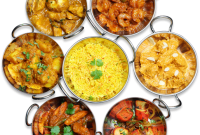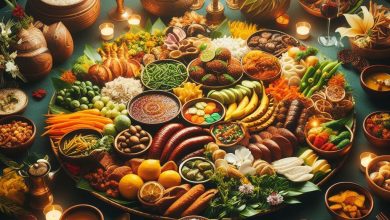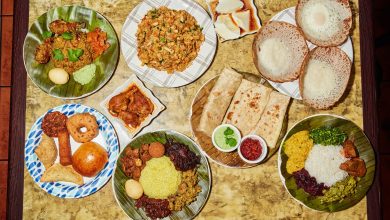What is the popular food of Sri Lanka? Reasons why Sri Lankan cuisine is famous
popular food of Sri Lanka
What is the popular food of Sri Lanka?
Sri Lankan food is renowned for its complex tastes, fragrant spices, and wide variety of cuisines. Here are a few of Sri Lanka’s most well-known meals and foods:
- Rice and Curry:
- In Sri Lanka, rice is a common staple dish that is frequently served with a variety of curries. These can include of various types of meat, fish, vegetables, lentils, and spices and herbs.
- Dhal Curry (Parippu):
- a red or yellow lentil dish that uses coconut milk, curry leaves, turmeric, and mustard seeds as flavorings.
- Sambal:
- Sambal is a hot sauce that can be created with a number of different ingredients, including coconut, chili peppers, lime, and occasionally fish or shrimp. It gives many Sri Lankan foods a flavorful boost.
- Hoppers (Appam):
- a particular style of bowl-shaped pancake that is cooked with fermented rice flour and coconut milk and is frequently eaten with eggs, curries, or sambal.
- String Hoppers (Idiyappam):
- often served with curries, these thin strands of nest-shaped rice flour dough.
- Roti and Paratha:
- wheat-based flatbread varieties that are typically served with dhal, curry, or sambal.
- Kottu Roti:
- roti stir-fry is a common street snack created by slicing roti and stir-frying it with a variety of veggies, eggs, and your choice of meat or fish, all seasoned with sauces and spices.
- Lamprais:
- A tasty, aromatic dinner made by wrapping rice, pork, and sambal in a banana leaf and baking it is a Dutch-inspired cuisine.
- Pol Sambol:
- salad of shredded coconut, red onions, chili peppers, lime juice, salt, and lime juice. It frequently goes with rice and curry.
- Fish Ambul Thiyal:
- a sour fish curry made with fish, spices, and goraka (a dried fruit), frequently made with tuna or another hard fish.
- Devilled Dishes:
- various foods cooked in hot, sour sauces, frequently containing meat (such as chicken, beef, or fish), and frequently eaten with rice or bread.
- Watalappan:
- Coconut milk, jaggery (unrefined sugar), eggs, and spices are combined to make a thick, custard-like pudding in this classic Sri Lankan treat, which is then steamed.
- Kiribath:
- A delicious meal composed of rice cooked in coconut milk that is frequently offered at festive and significant events.
- Achcharu:
- a fruit or vegetable pickle that is sour and spicy and produced from ingredients like mango, pineapple, or onion.
As well as its distinctive fusion of culinary influences from India, China, the Middle East, and Europe, Sri Lankan cuisine is renowned for its strong tastes, usage of spices like cardamom, cinnamon, and cloves, and utilization of these ingredients.
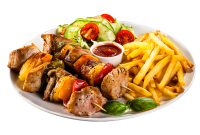
Reasons why Sri Lankan cuisine is famous:
Sri Lankan food has become more well-known and well-liked for a number of compelling reasons, exhibiting its distinctive tastes, wide range of ingredients, and cultural significance:
- Distinctive Flavor Profile:
- Due to the distinctive combination of spices and herbs used in their traditional meals, Sri Lankan cuisine is renowned for its strong and varied tastes. Aromatic spices with a particular flavor are frequently utilized, including cinnamon, cardamom, clove, and curry leaves.
- Rich Culinary Heritage:
- With a rich and varied culinary tradition, Sri Lankan cuisine has been influenced by many different civilizations, including Indian, Dutch, Portuguese, Arabic, Malay, and Chinese. The originality and complexity of Sri Lankan cuisine are a result of the blending of many culinary traditions.
- Use of Fresh and Natural Ingredients:
- The utilization of fresh, organic ingredients, such as an abundance of tropical fruits, vegetables, seafood, and fragrant spices, is emphasized in Sri Lankan cuisine. The use of fresh ingredients enhances the flavor and healthfulness of the food.
- Variety of Dishes:
- Rice, curries, hoppers, rotis, seafood specialities, and desserts are just a few of the many foods available in Sri Lankan cuisine. This variety caters to a wide range of tastes and preferences while providing a diverse dining experience.
- Culinary Creativity and Adaptability:
- Chefs and cooks in Sri Lanka exhibit innovation when combining ingredients and changing recipes to suit regional preferences. Traditional foods have remained popular and relevant across centuries thanks to their versatility.
- Influence of Spices and Aromatics:
- Spices like pepper, turmeric, fenugreek, and cumin, when used with finesse, give Sri Lankan recipes depth and complexity. The cuisine’s distinctive tastes and fragrant aromas are produced by these spices.
- Tropical Ingredients:
- Coconut, jackfruit, mango, pineapple, bananas, and other leafy greens are just a few of the fresh and unique foods that are abundant in Sri Lanka because to its tropical environment. These components help Sri Lankan cuisine have a distinct flavor and charm.
- Healthy and Nutritious:
- Sri Lankan food is a healthy option since it frequently includes wholesome components including lentils, vegetables, fruits, and seafood. Many cuisines contain coconut milk, which is well-known for its health advantages.
- Culinary Tourism and Food Experiences:
- Globally, culinary tourism has grown in popularity, and Sri Lanka’s distinctive and tasty cuisine draws food lovers and tourists looking for real food experiences, cooking lessons, and food tours.
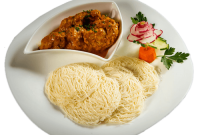
The growing desire in discovering new and distinctive culinary experiences, as well as Sri Lankan cuisine’s delectable tastes, health advantages, and cultural importance, all contribute to its appeal on a worldwide scale.
